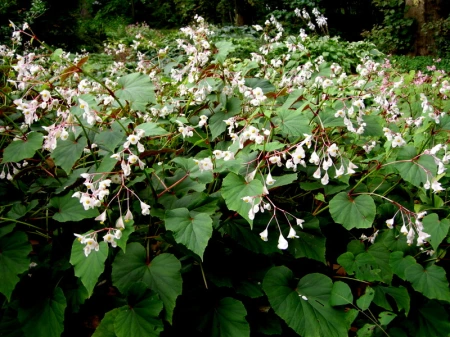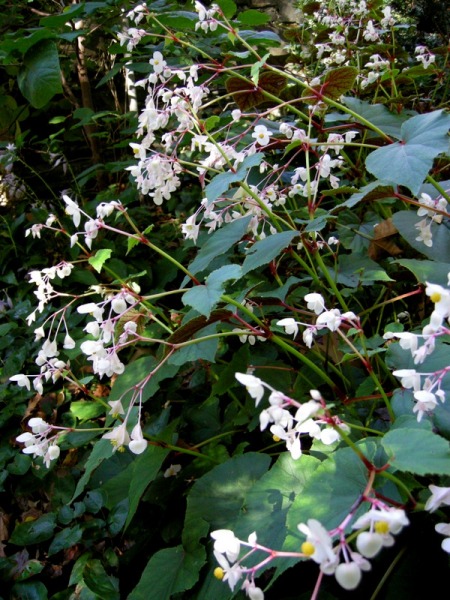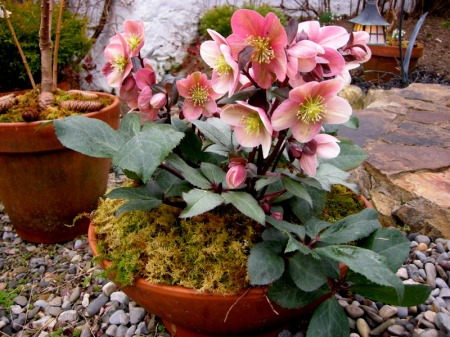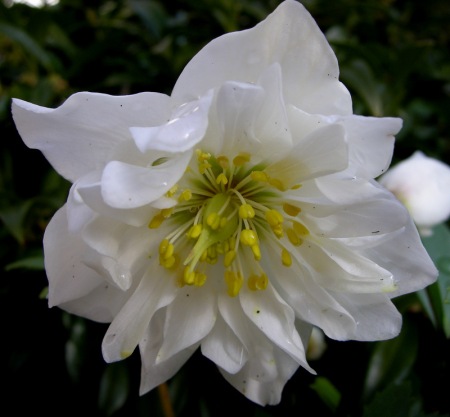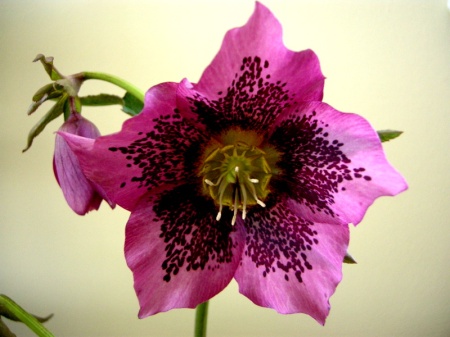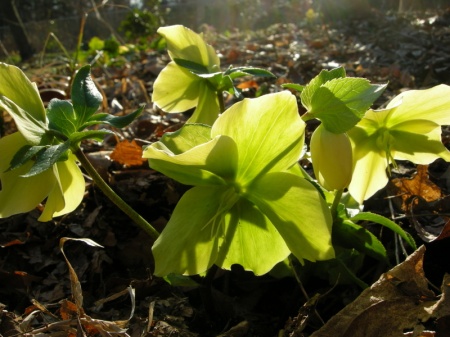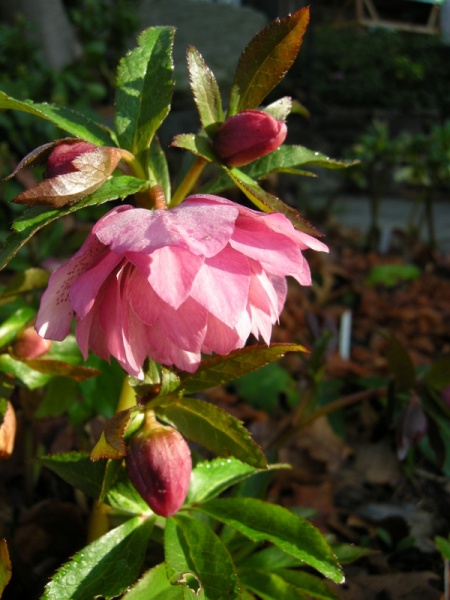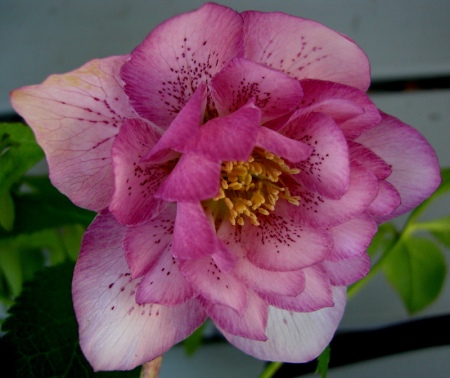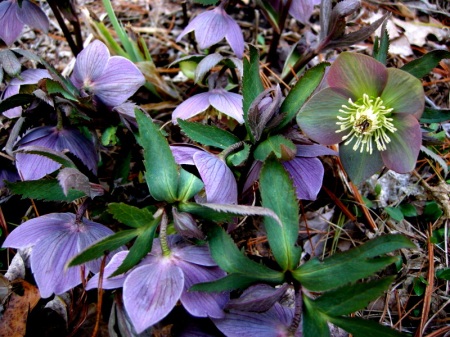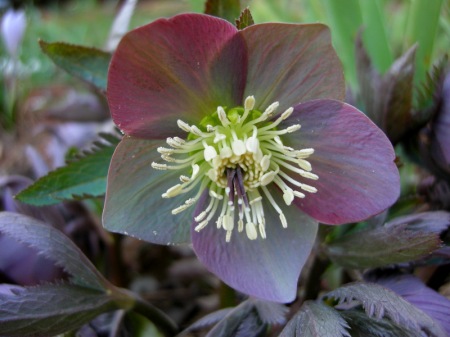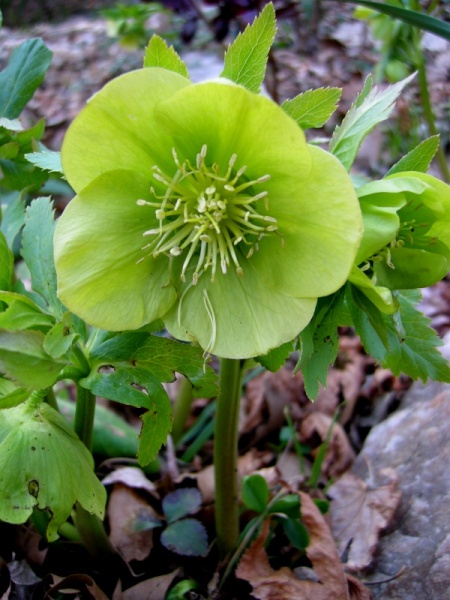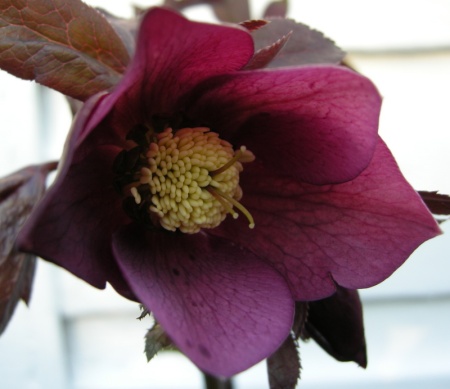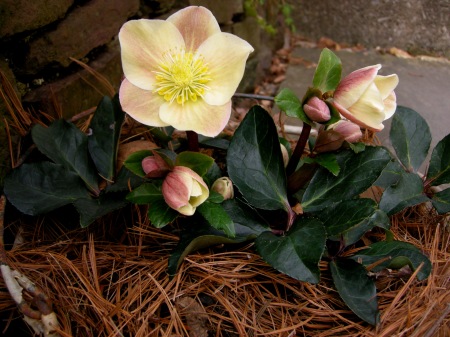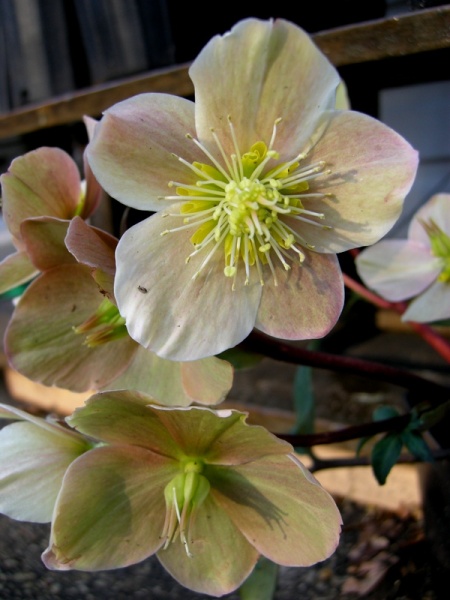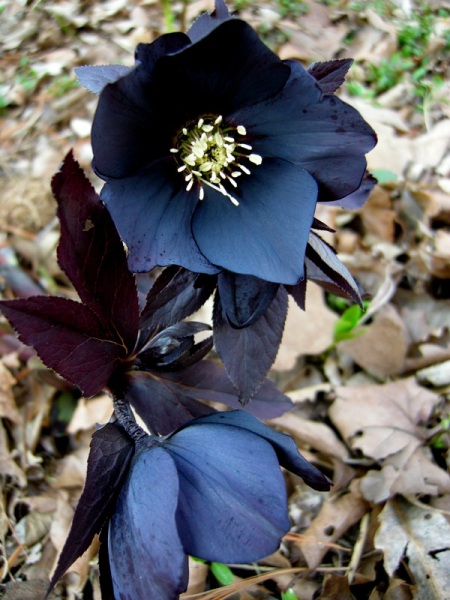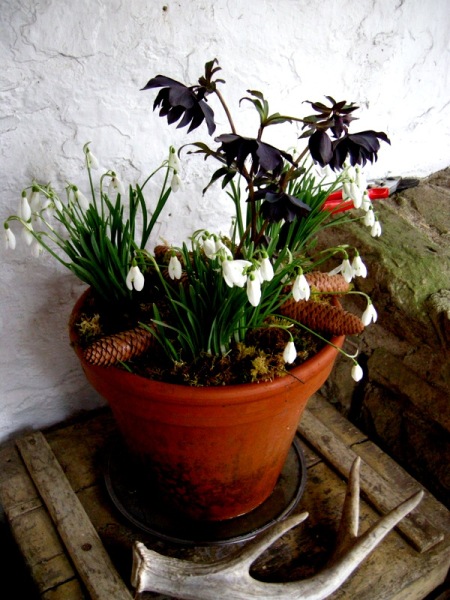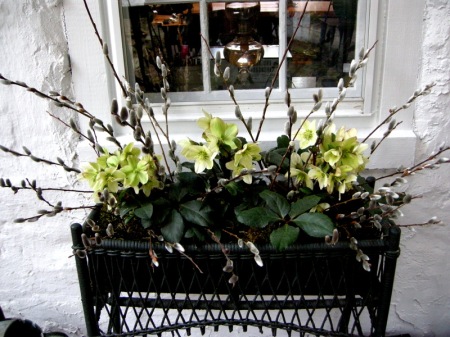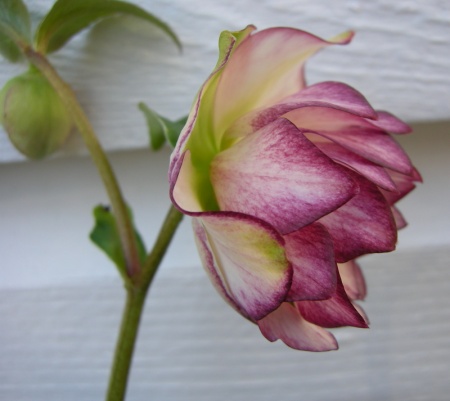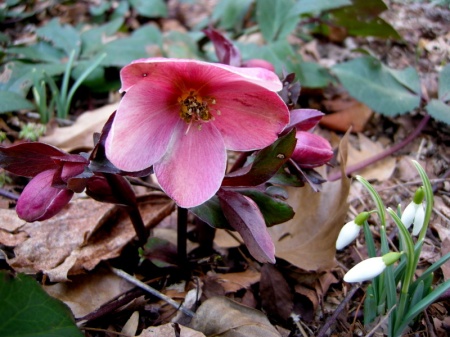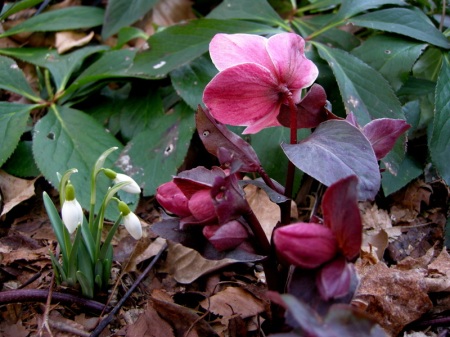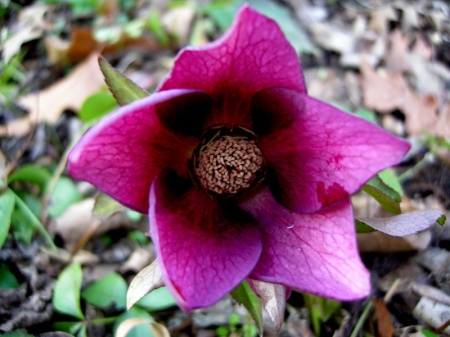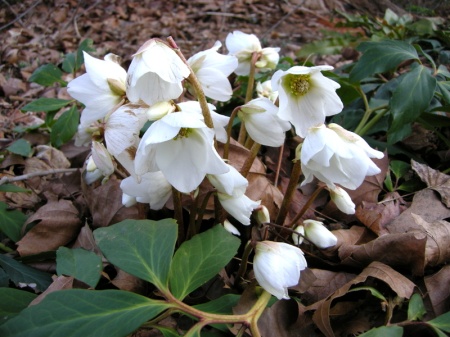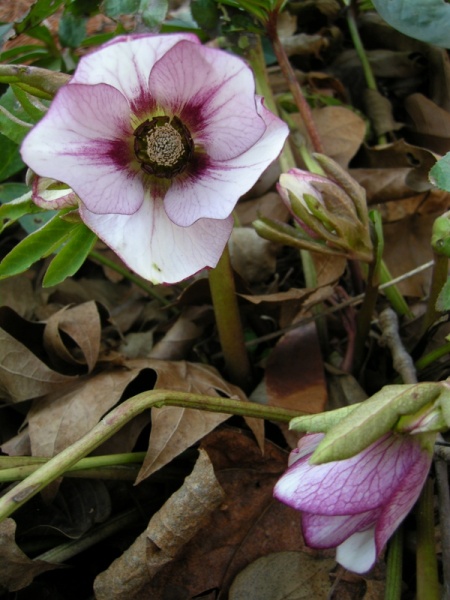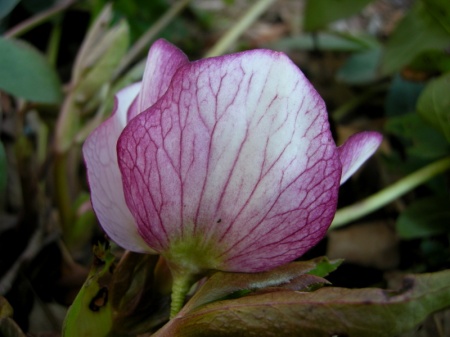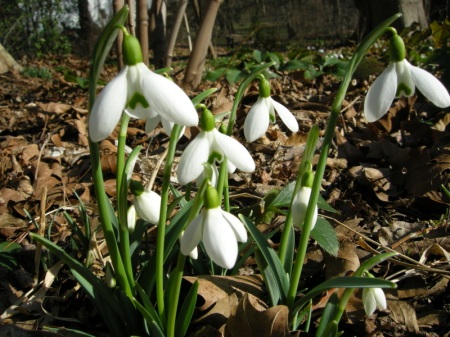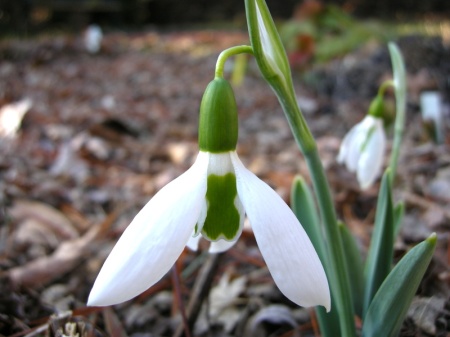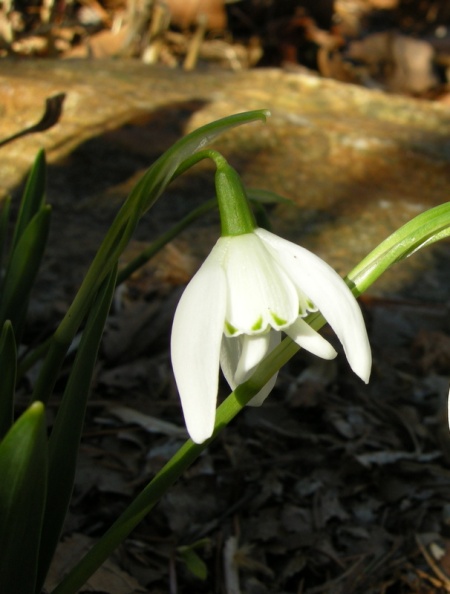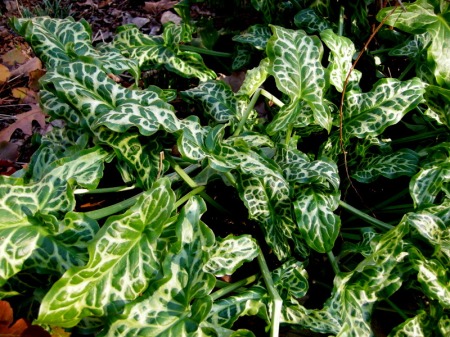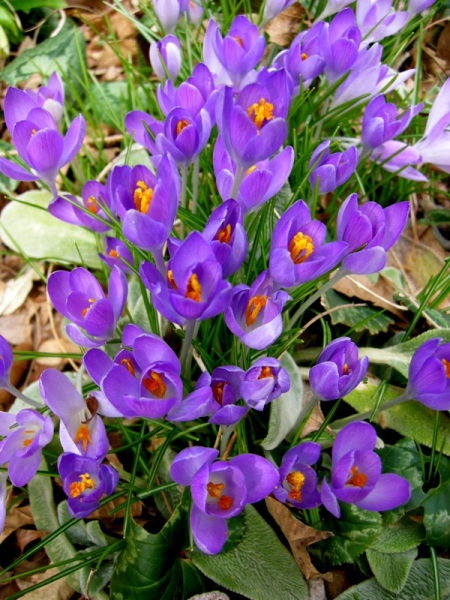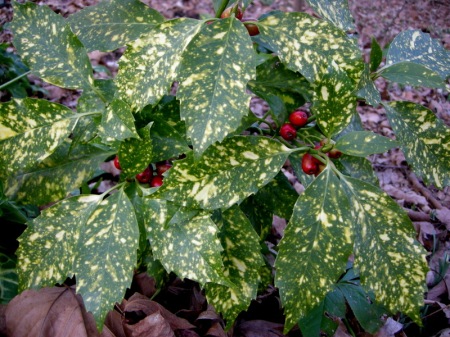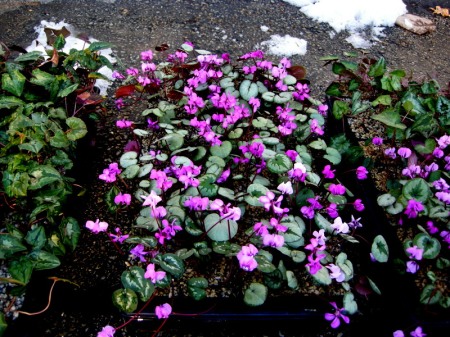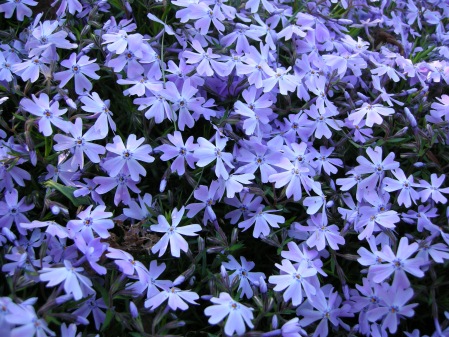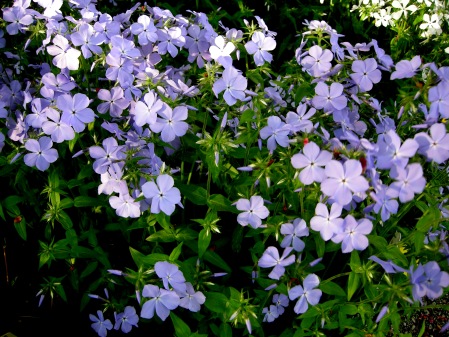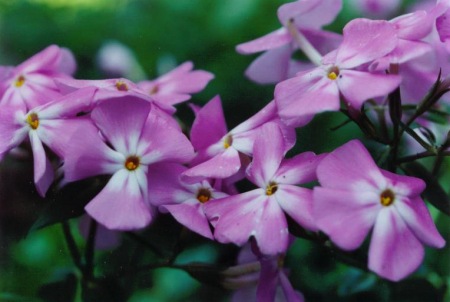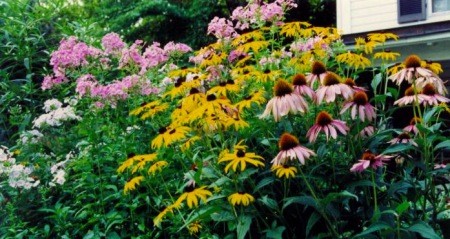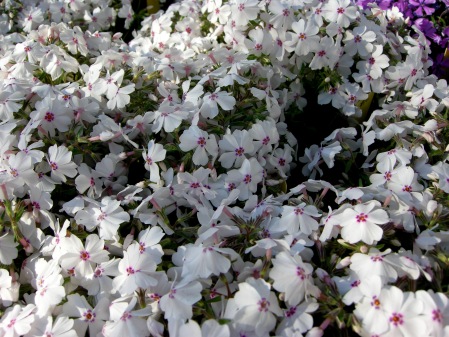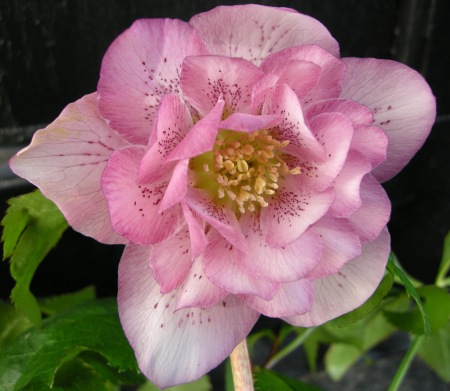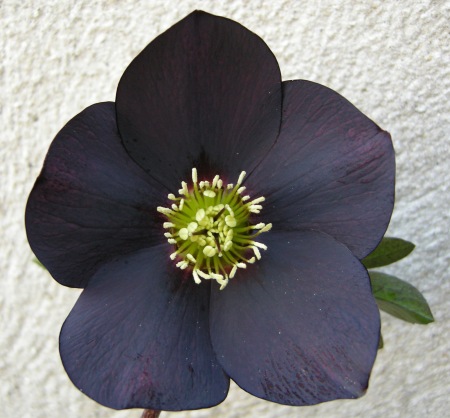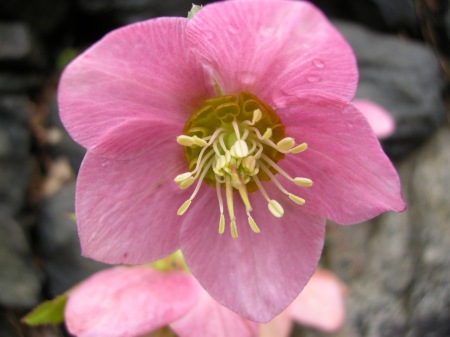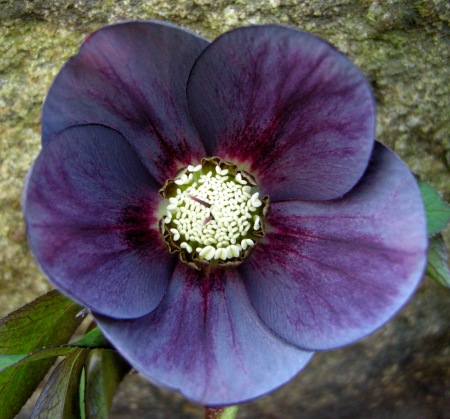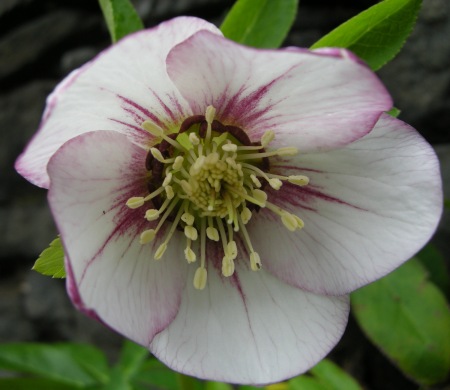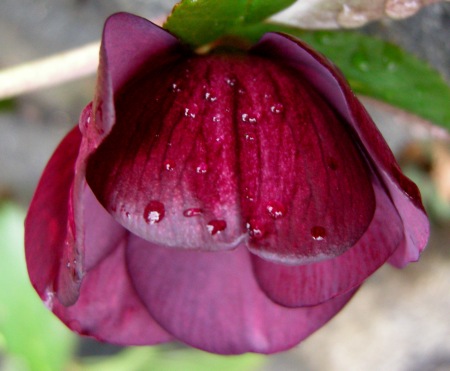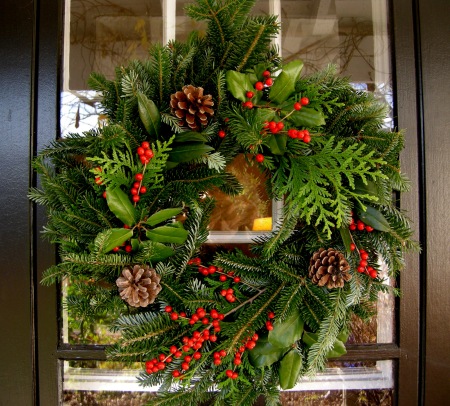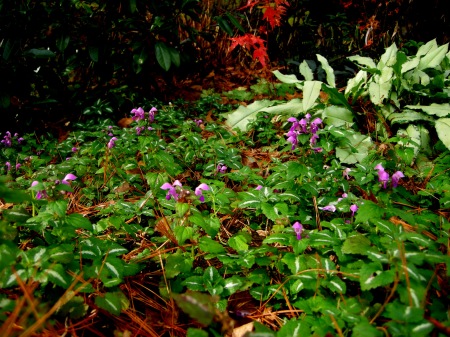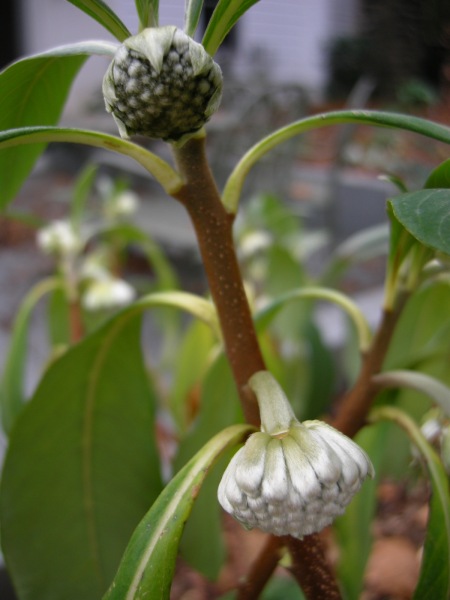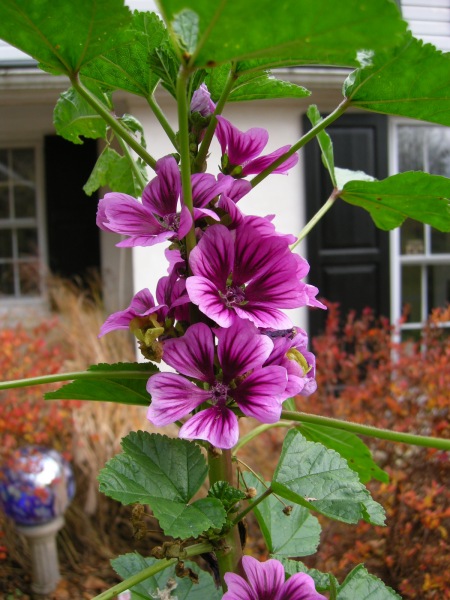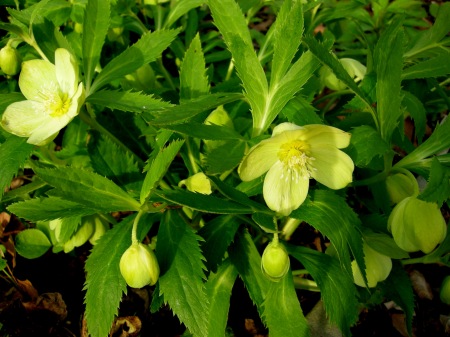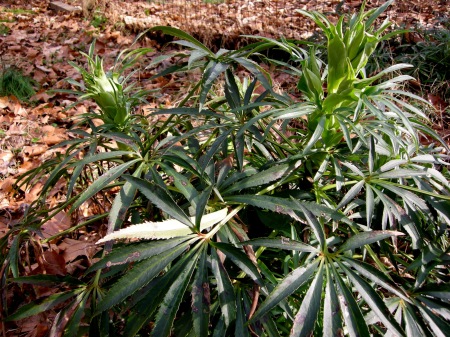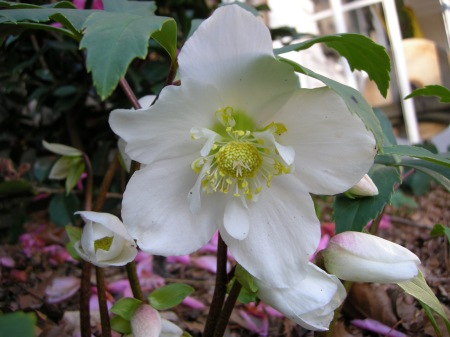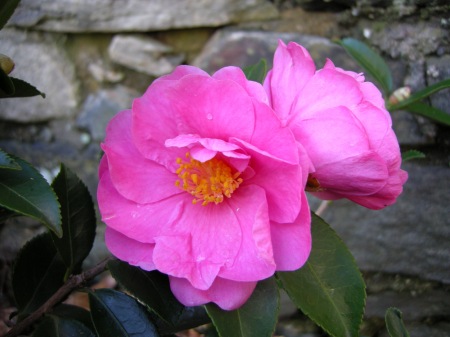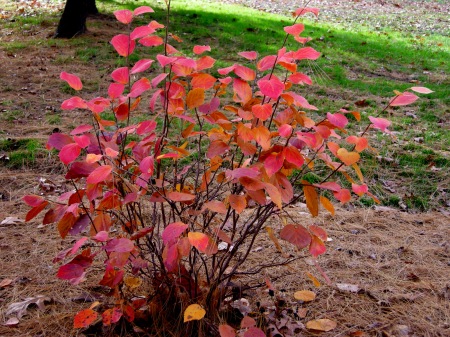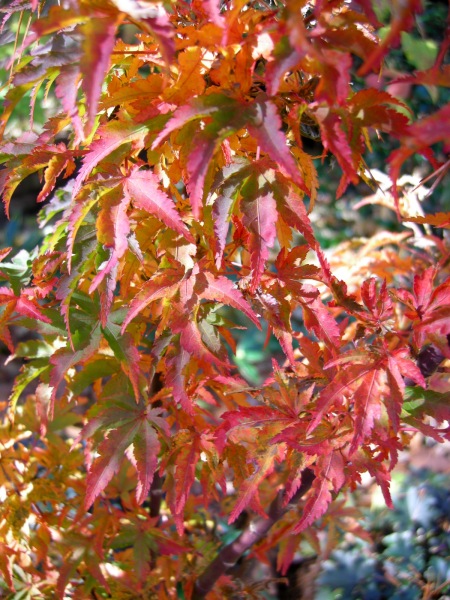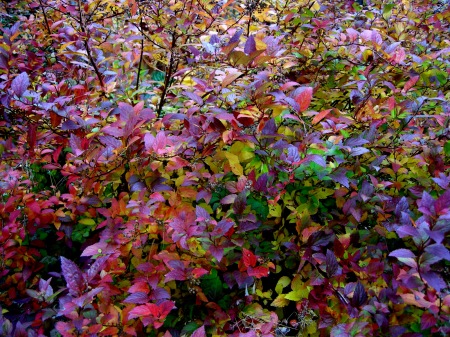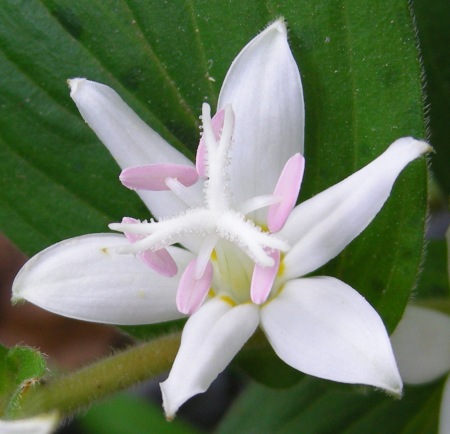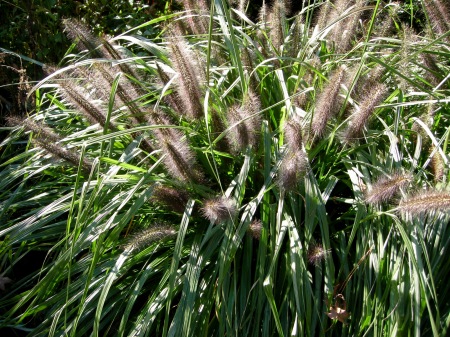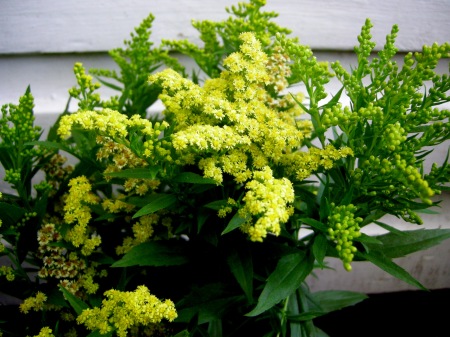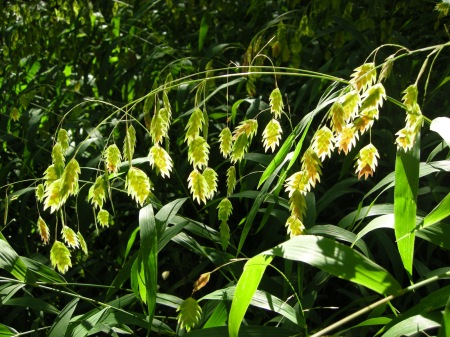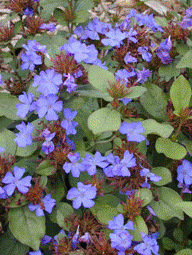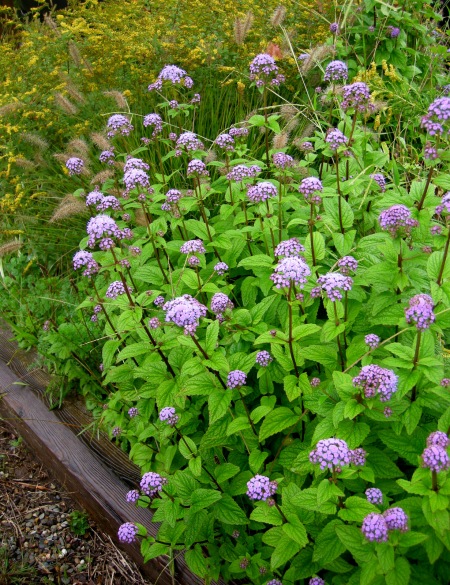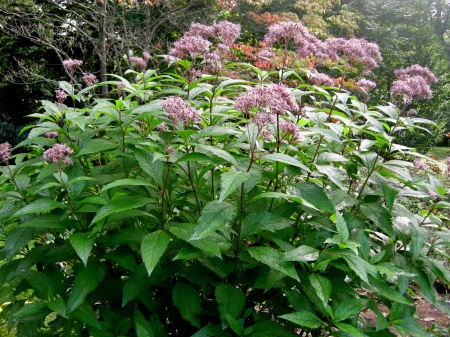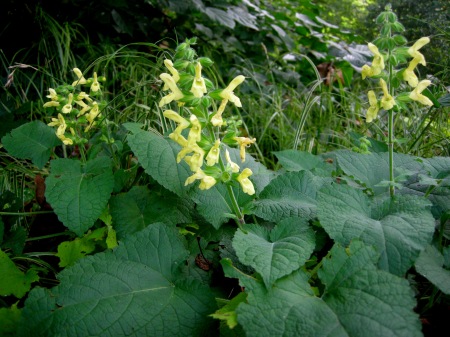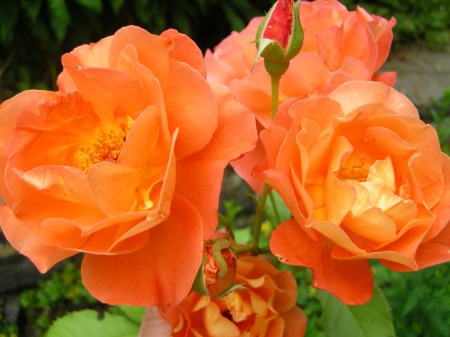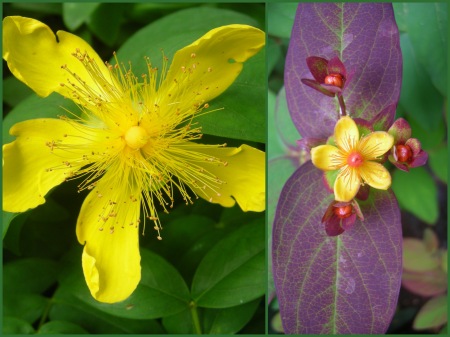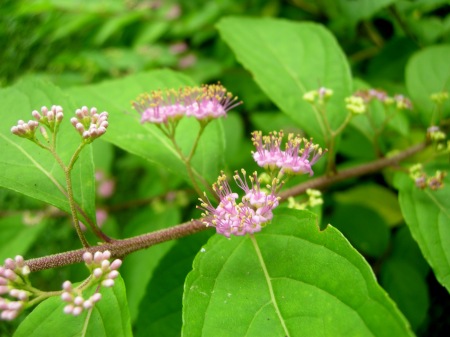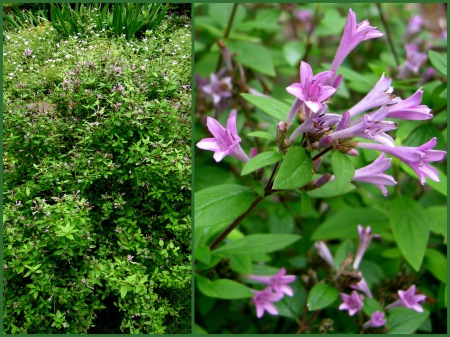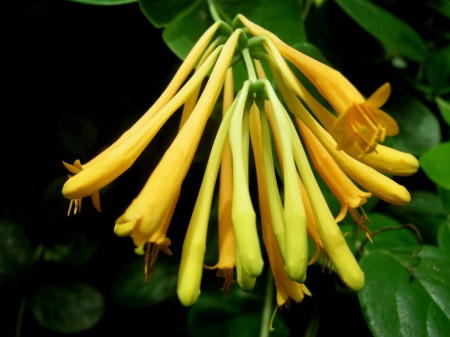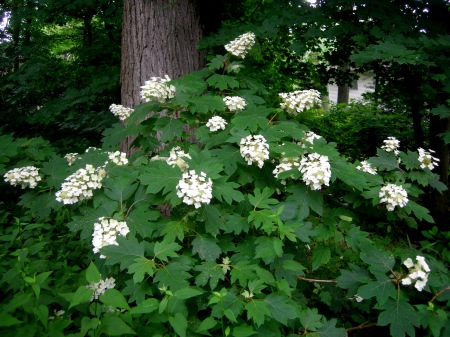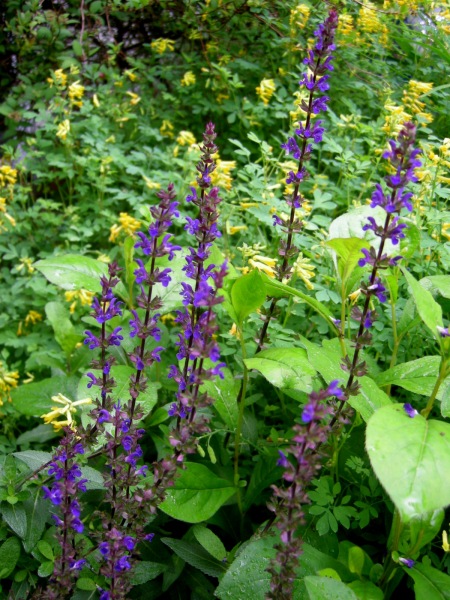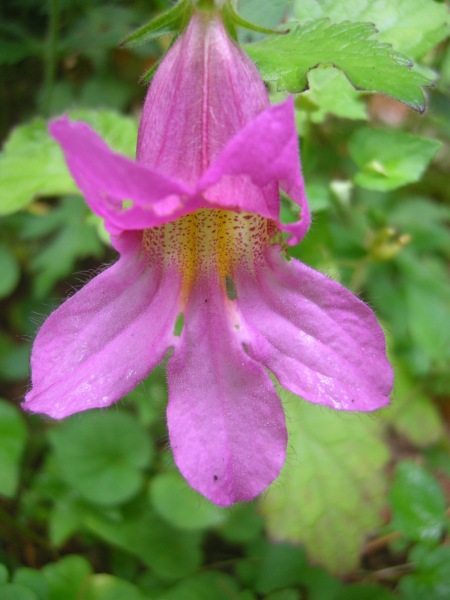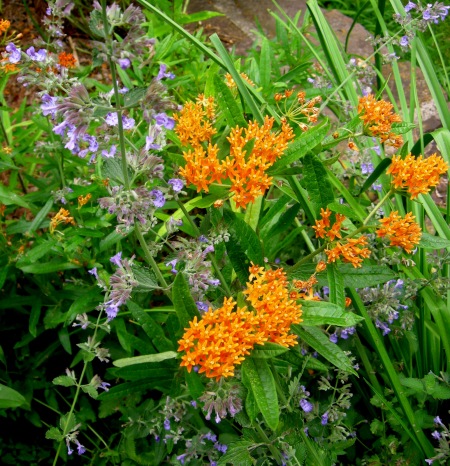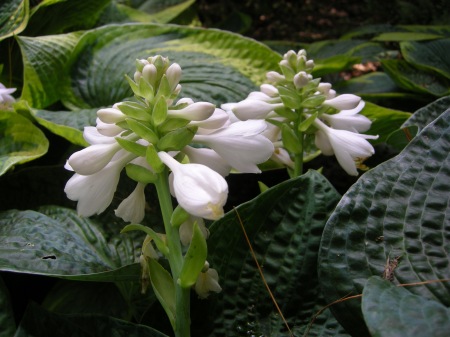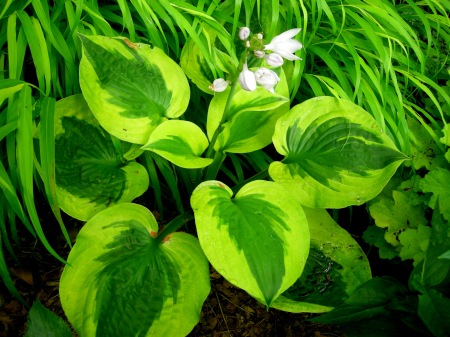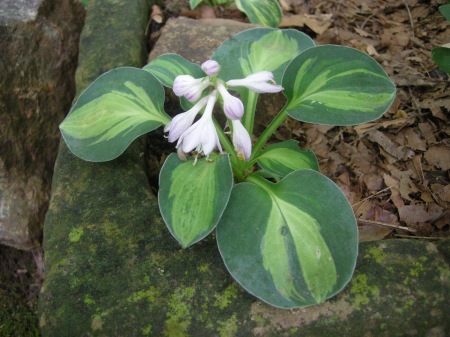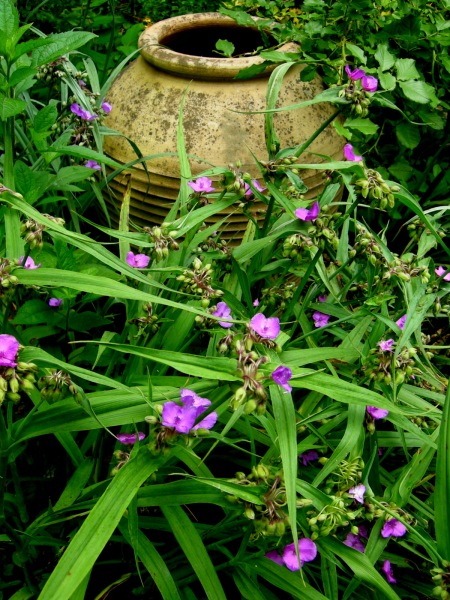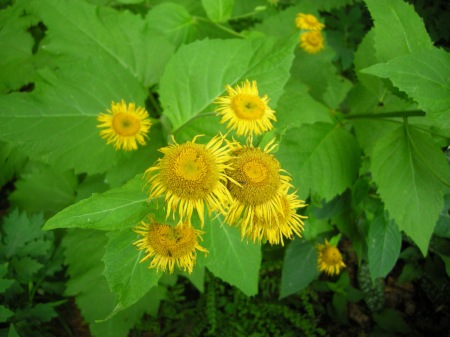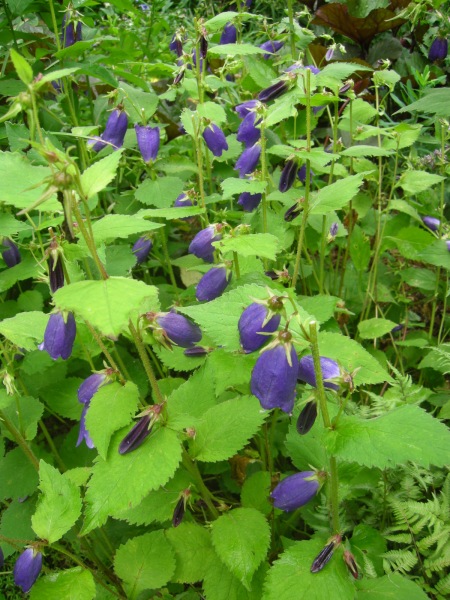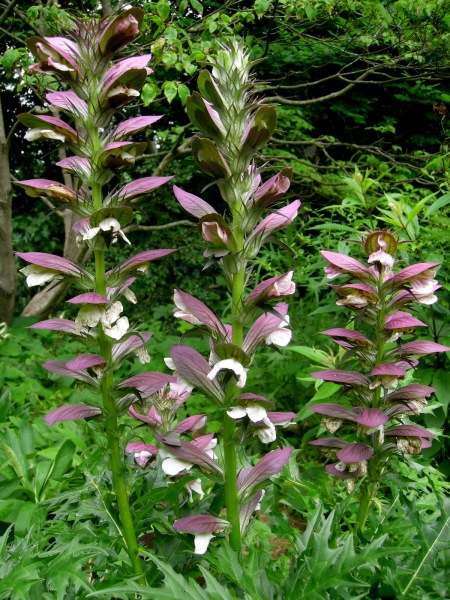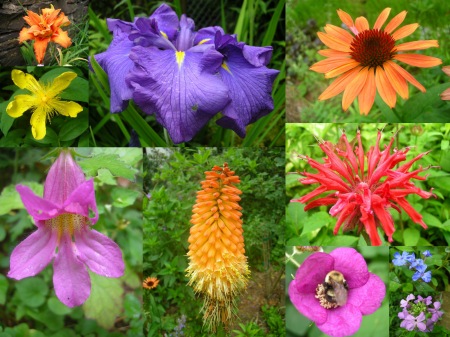Carolyn’s Shade Gardens is a retail nursery located in Bryn Mawr, PA, specializing in showy, colorful, and unusual plants for shade. The only plants that we ship are snowdrops and miniature hostas. For catalogues and announcements of events, please send your full name, location, and phone number (for back up use only) to carolyn@carolynsshadegardens.com. Click here to get to the home page of our website for catalogues and information about our nursery and to subscribe to our blog.
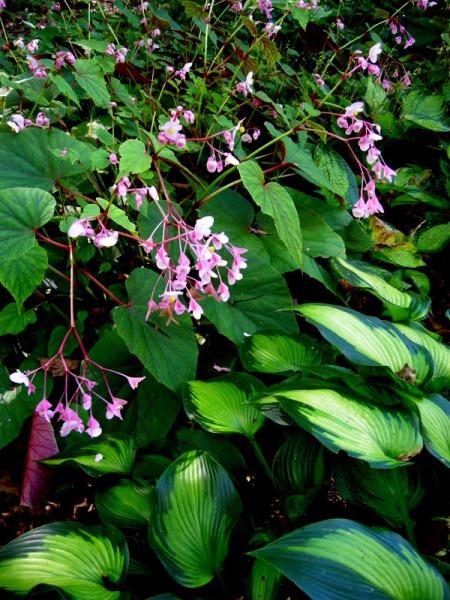 Hardy begonias and ‘Paradise Joyce’ hosta
Hardy begonias and ‘Paradise Joyce’ hosta
I have been very busy getting the nursery ready for the fall season but took a few hours off to get this Garden Blogger’s Bloom Day post done. First though, I want to tell you what is in the fall line up. Our fourth annual Double Hellebore Offer is underway. To look at the brochure, click here. These hellebores are the biggest doubles we have ever sold, and they are almost guaranteed to bloom this spring because they bloomed last spring. If you want to see them in person, they are here right now and ready to go, so make an appointment or come during our open hours tomorrow, Sunday, September 15, from 1 to 3 pm.
.
 Hardy begonias are the ideal fall plant—they come up late and look pristine when they bloom from September through the first frost.
Hardy begonias are the ideal fall plant—they come up late and look pristine when they bloom from September through the first frost.
Our fall season started today, September 14, when we opened for a few hours so customers eager to start planting could shop. Thanks to everyone who came by. We will be open again tomorrow from 1 pm to 3 pm. The first full-fledged open house sale is scheduled for Septmebr 28, and cyclamen breeder John Lonsdale will be making a guest appearance with his gorgeous hardy cyclamen. He will have selected forms of Cyclamen hederifolium plus many other rare species. Customers will get an email with all the details. If you want to come before September 28, just send me an email with your preferred day and time.
.
I am currently putting together a Shrub, Tree, and Vine Offer with woody plants suitable for all your shady areas. Look for an email this week if you are on my customer email list. Finally, my husband Michael will be holding three sessions of his well-attended Low Maintenance Gardening Seminars. They are tentatively scheduled for September 27, 29, and 30, but all the details will arrive by email shortly. That’s all the business for now so on to the post….
.
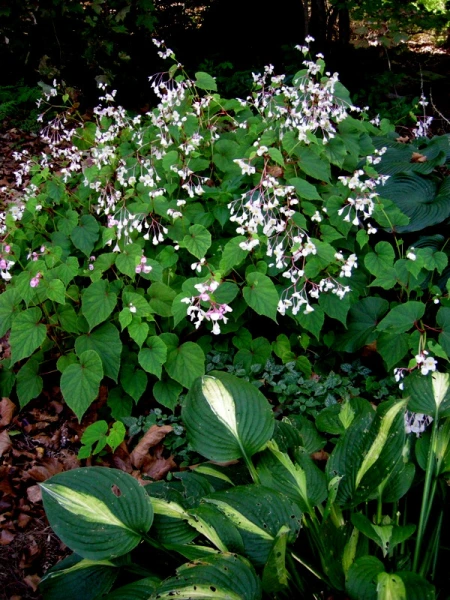 My back hill is filled with large patches of hostas, and I use hardy begonias to fill in between them and even to cover up plants that are worn out by fall.
My back hill is filled with large patches of hostas, and I use hardy begonias to fill in between them and even to cover up plants that are worn out by fall.
It is the middle of the month and time to participate in Garden Blogger’s Bloom Day (GBBD) hosted by May Dreams Gardens (link available on the 15th of the month) where gardeners from all over the world publish photos each month of what’s blooming in their gardens. I participate because it is fun and educational for me to identify what plants make my gardens shine at different times of the year. I encourage all gardeners, but especially my customers, to expand their floral display beyond spring so that their gardens delight them with flowers whenever they go outside.
My garden is located in Bryn Mawr (outside Philadelphia), Pennsylvania, U.S., in zone 6B.
.
.
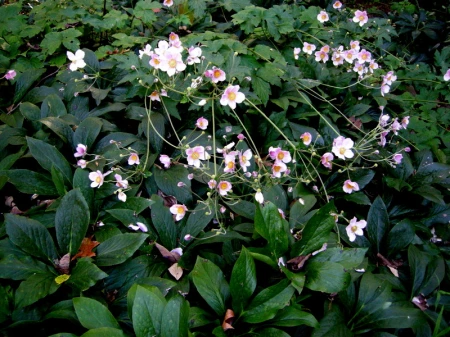 Another fall star is Japanese anemone, which blooms from August into October depending on the variety. The taller cultivars look beautiful draped over shorter plants, here hybrid hellebores. However, shorter and more upright types have been introduced lately, look for the Pretty Lady series and ‘Pink Saucers’, both available at Carolyn’s Shade Gardens.
Another fall star is Japanese anemone, which blooms from August into October depending on the variety. The taller cultivars look beautiful draped over shorter plants, here hybrid hellebores. However, shorter and more upright types have been introduced lately, look for the Pretty Lady series and ‘Pink Saucers’, both available at Carolyn’s Shade Gardens.
.
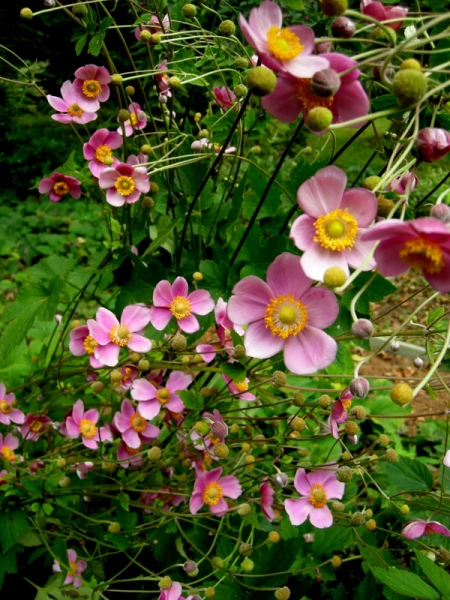 ‘September Charm’ Japanese anemone
‘September Charm’ Japanese anemone
.
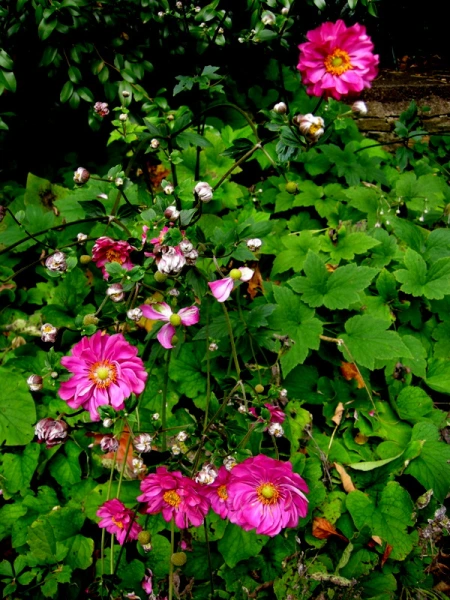 My favorite, ‘Pamina’ Japanese anemone
My favorite, ‘Pamina’ Japanese anemone
.
 I generally do not grow hostas for their flowers, but I make an exception for the highly fragrant varieties like ‘Guacamole’. This photo shows ‘Honeybells’ towering over my miniature hosta rock garden.
I generally do not grow hostas for their flowers, but I make an exception for the highly fragrant varieties like ‘Guacamole’. This photo shows ‘Honeybells’ towering over my miniature hosta rock garden.
.
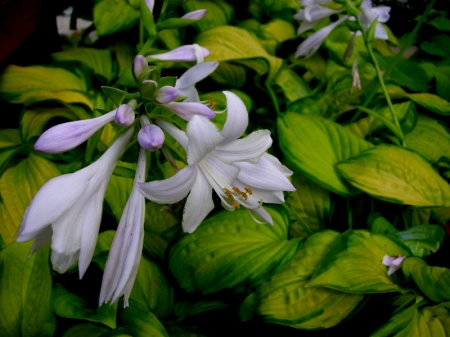 Another hosta with deliciously fragrant flowers is ‘Stained Glass’, the 2006 Hosta of the Year.
Another hosta with deliciously fragrant flowers is ‘Stained Glass’, the 2006 Hosta of the Year.
.
 ‘Stained Glass’ is one of my favorite hostas—how many of your hostas look like this by fall?
‘Stained Glass’ is one of my favorite hostas—how many of your hostas look like this by fall?
.
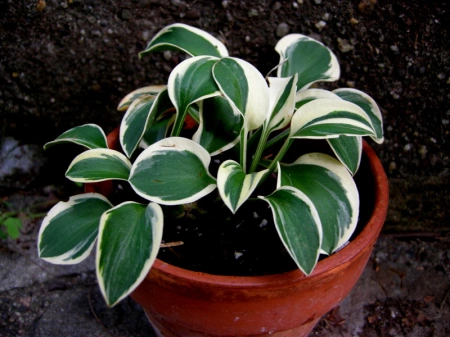 Another hosta that comes through summer in pristine condition is the adorable miniature ‘Mighty Mouse’.
Another hosta that comes through summer in pristine condition is the adorable miniature ‘Mighty Mouse’.
..
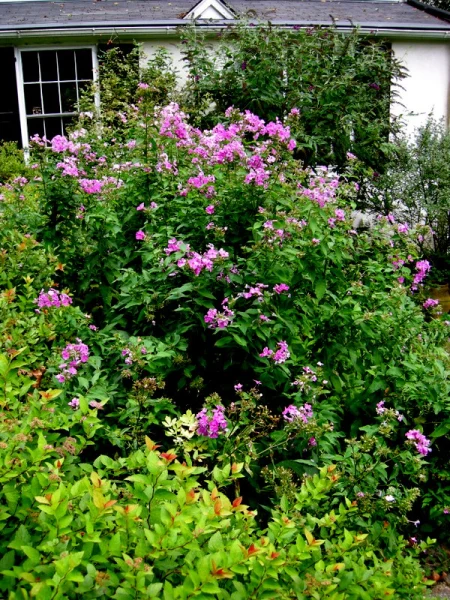 It wouldn’t be fall without garden phlox. I let this highly fragrant native plant self sow throughout my gardens and it is usually covered with butterflies.
It wouldn’t be fall without garden phlox. I let this highly fragrant native plant self sow throughout my gardens and it is usually covered with butterflies.
.
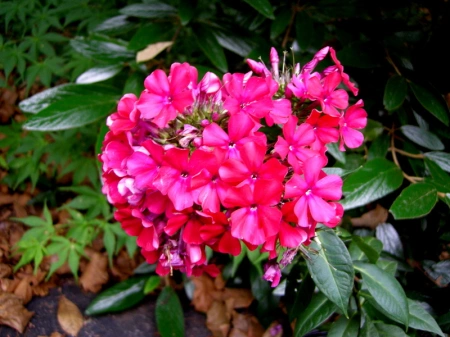 The more modern garden phlox cultivars are mildew resistant and come in vibrant colors like ‘Starfire’ in this photo.
The more modern garden phlox cultivars are mildew resistant and come in vibrant colors like ‘Starfire’ in this photo.
.
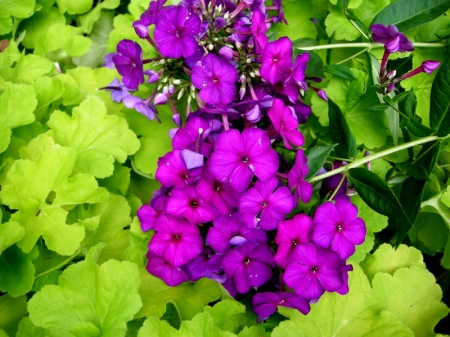 ‘Nicky’ garden phlox with ‘Citronelle’ coralbells
‘Nicky’ garden phlox with ‘Citronelle’ coralbells
.
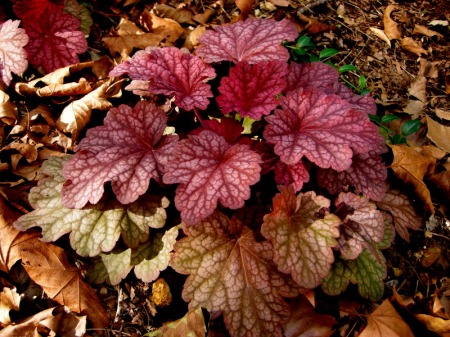 Customers have been raving about ‘Berry Smoothie’ coralbells for the last couple of years so I finally planted it in my garden—gorgeous.
Customers have been raving about ‘Berry Smoothie’ coralbells for the last couple of years so I finally planted it in my garden—gorgeous.
.
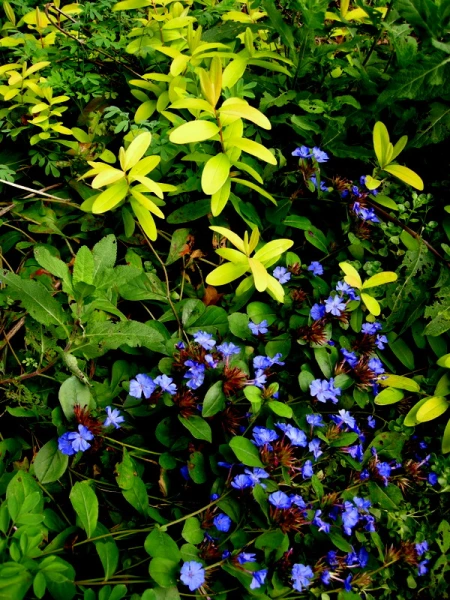 Two of my favorite colors, yellow and blue, come together through the side-by-side pairing of ‘Brigadoon’ St. John’s wort and plumbago (also called autumn leadwort), both excellent groundcovers.
Two of my favorite colors, yellow and blue, come together through the side-by-side pairing of ‘Brigadoon’ St. John’s wort and plumbago (also called autumn leadwort), both excellent groundcovers.
.
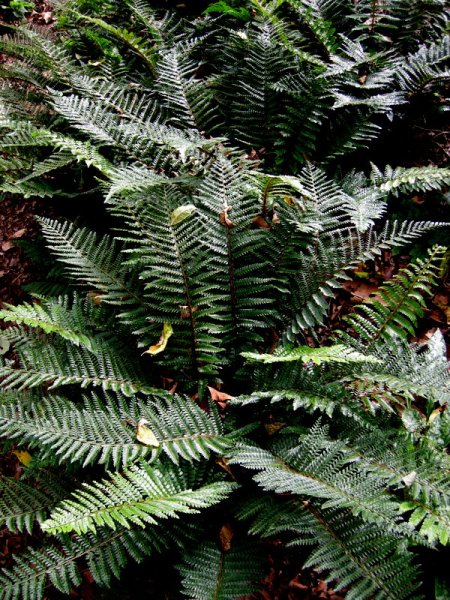 Tassel fern makes such an elegant specimen with its circular habit and shiny evergreen leaves.
Tassel fern makes such an elegant specimen with its circular habit and shiny evergreen leaves.
.
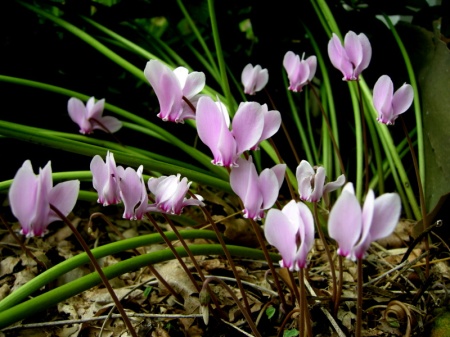 It wouldn’t be September without fall-blooming hardy cyclamen. The flowers start blooming in August (and last into October) and are followed by the beautifully patterned leaves which last until the next June.
It wouldn’t be September without fall-blooming hardy cyclamen. The flowers start blooming in August (and last into October) and are followed by the beautifully patterned leaves which last until the next June.
.
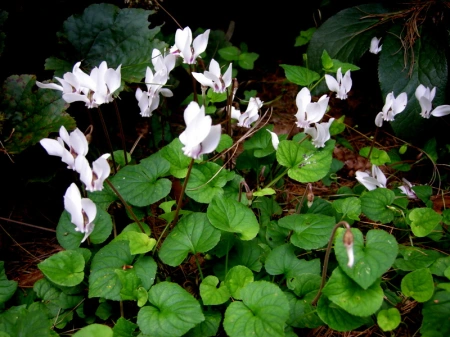 white fall-blooming hardy cyclamen
white fall-blooming hardy cyclamen
.
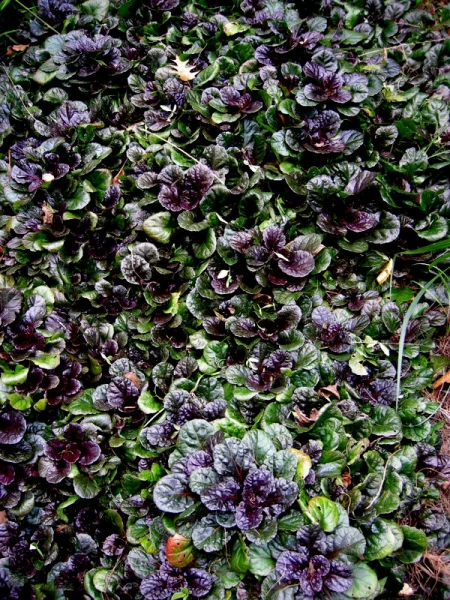 ‘Black Scallop’ ajuga is the only one I sell because it is so superior. It produces a solid weed-choking mat of very shiny, semi-evergreen leaves topped by lovely blue flowers.
‘Black Scallop’ ajuga is the only one I sell because it is so superior. It produces a solid weed-choking mat of very shiny, semi-evergreen leaves topped by lovely blue flowers.
.
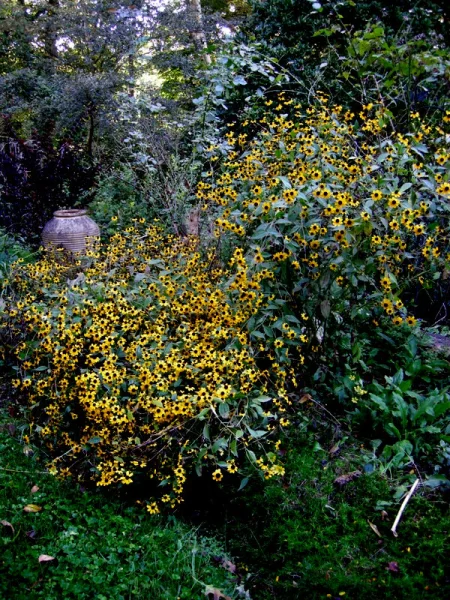 This late-blooming black-eyed Susan species, Rudbeckia triloba (thanks Heide) self sows like mad, but I wouldn’t give up the beautiful display.
This late-blooming black-eyed Susan species, Rudbeckia triloba (thanks Heide) self sows like mad, but I wouldn’t give up the beautiful display.
.
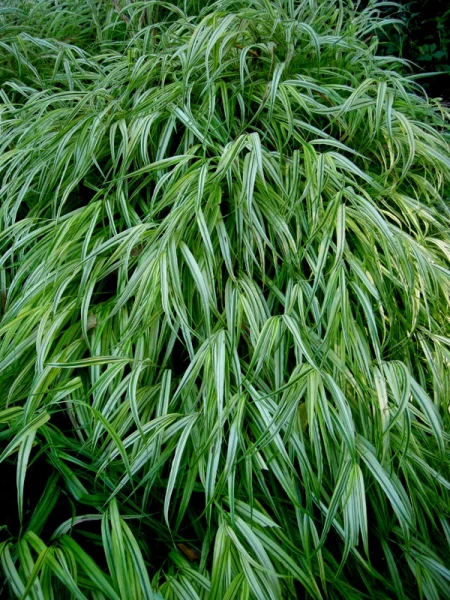 ‘Aureola’ Japanese hakone grass is beautiful all year.
‘Aureola’ Japanese hakone grass is beautiful all year.
.
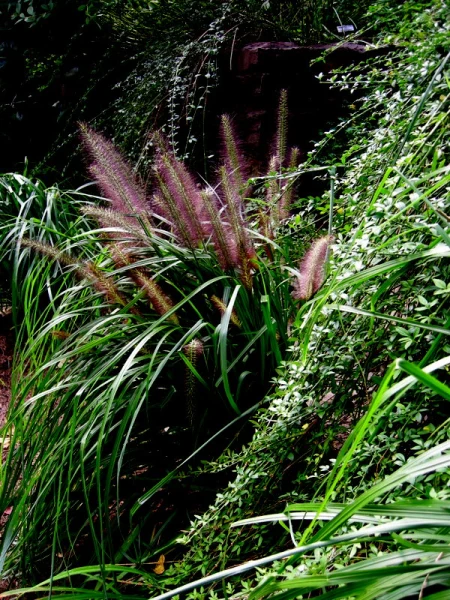 Black fountain grass comes into its glory in the fall. Yes, I know it can spread, but I have had it for 15 years and it hasn’t gone anywhere that I didn’t want to leave it. Gardeners with smaller areas or less tolerance for the natural look should beware.
Black fountain grass comes into its glory in the fall. Yes, I know it can spread, but I have had it for 15 years and it hasn’t gone anywhere that I didn’t want to leave it. Gardeners with smaller areas or less tolerance for the natural look should beware.
.
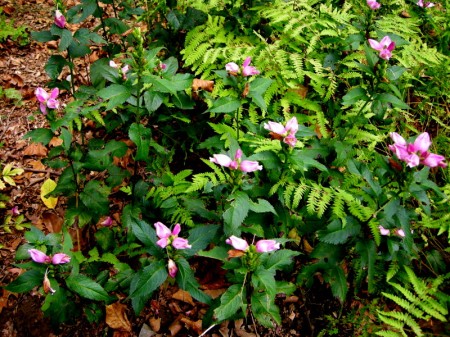 Another favorite native, pink turtlehead, peaks in my garden in September.
Another favorite native, pink turtlehead, peaks in my garden in September.
.
 A glimpse of what’s to come in October, the first flower opens on my ‘Sinonome’ toad-lily.
A glimpse of what’s to come in October, the first flower opens on my ‘Sinonome’ toad-lily.
Almost all of these plants are available for sale at Carolyn’s Shade Gardens so, if you are in the area, I hope you will stop by. If not, you now have a lot of ideas for your fall shade garden.
Carolyn
.
Carolyn’s Shade Gardens is a retail nursery located in Bryn Mawr, Pennsylvania, U.S., zone 6b. The only plants that we mail order are snowdrops and miniature hostas and only within the US.
If you are within visiting distance and would like to receive catalogues and information about customer events, please send your full name and phone number to carolynsshadegardens@verizon.net. Subscribing to my blog does not sign you up to receive this information.
Nursery Happenings: Carolyn’s Shade Gardens will be open Sunday, September 15, from 1 to 3 pm, and for a full-fledged open house sale on Saturday, September 28, from 10 am to 3 pm. We are currently offering double hellebores, both by pre-order and at the nursery. For details, click here. Now that it’s cool, we are also shipping miniature hostas again. For details, click here. Low maintenance seminars and a chance to order shrubs and vines are in the works.
Facebook: Carolyn’s Shade Gardens has a Facebook Page where I post single photos, garden tips, and other information that doesn’t fit into a blog post. You can look at my Facebook page here or click the Like button on my right sidebar here.
Notes: Every word that appears in orange on my blog is a link that you can click for more information. If you want to return to my blog’s homepage to access the sidebar information (catalogues, previous articles, etc.) or to subscribe to my blog, just click here.
